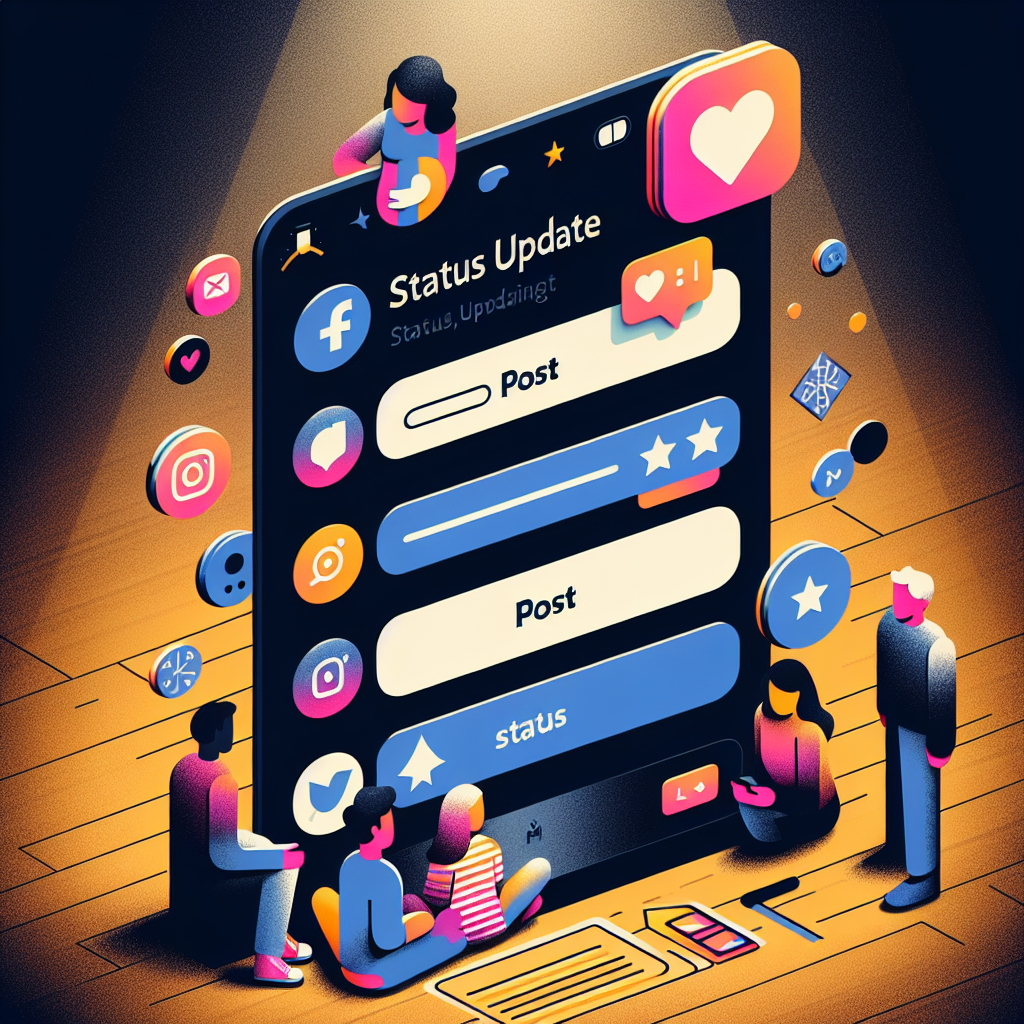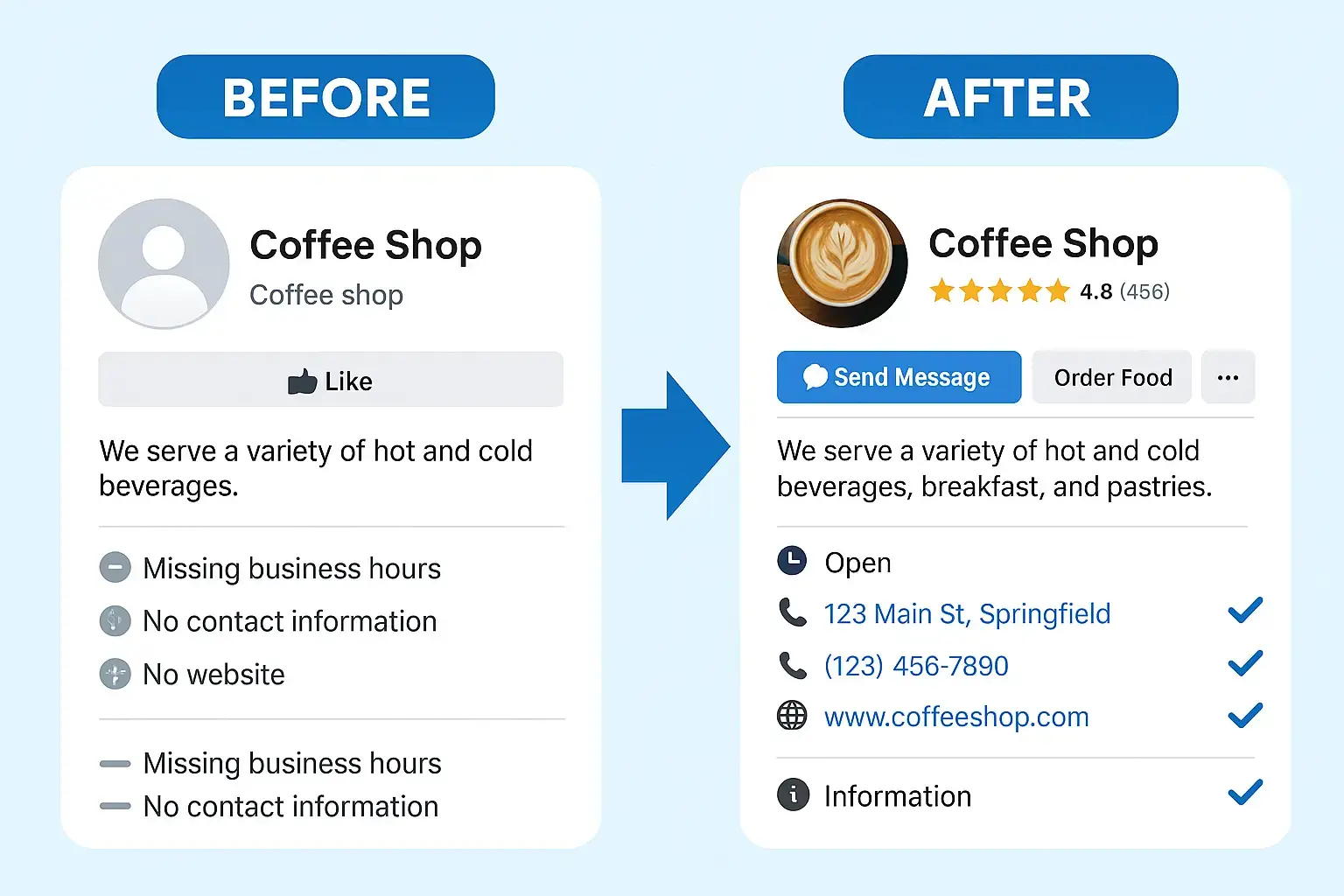Get Help with Social Media: A Practical Guide for Small Business Owners
by
Gary
on
Running a small business means wearing countless hats – you're the manager, accountant, customer service rep, and marketing team all rolled into one. When it comes to social media, you know it's important for attracting customers, but between managing daily operations and serving customers, where do you find the time to post consistently, engage with followers, and create content that actually converts?
You're not alone in feeling overwhelmed by social media. Many business owners start with good intentions, posting sporadically when they remember, only to see little engagement and wonder if it's worth the effort. The truth is, social media can be a powerful tool for growing your business – but only when you approach it strategically and consistently.
This guide will help you cut through the confusion and create a social media approach that works for your business, your schedule, and your budget. You'll discover practical strategies that don't require hours of daily management, and learn how to turn your social media presence into a reliable source of new customers.
.png?width=1536&height=1024&name=image%20(15).png)
Understanding What Social Media Can Actually Do for Your Business
Setting realistic expectations for social media results
Many business owners expect immediate results from social media, but sustainable growth takes time and consistency. Social media works best as a relationship-building tool that gradually increases awareness and trust in your brand. Think of it as digital word-of-mouth rather than direct advertising.
Your social media presence serves multiple purposes: it makes your business appear current and professional, provides social proof through customer interactions, and gives potential customers a way to research your business before visiting. When someone searches for your restaurant or café online, your active social media profiles reassure them that you're legitimate and engaged with your community.
Choosing the right platforms for your business type
Not every social platform will work for your business, and trying to be everywhere at once is a recipe for burnout. Focus on where your customers actually spend their time. For local businesses, Facebook remains crucial because it's where people search for nearby restaurants, check operating hours, and read reviews from other customers.
Instagram works well for visually appealing businesses – cafes with beautiful latte art, restaurants with photogenic dishes, or boutique hotels with stunning interiors. If your business relies heavily on visual appeal, Instagram can showcase your offerings effectively. LinkedIn is valuable for B2B services, while TikTok can work for businesses targeting younger demographics with fun, behind-the-scenes content.
Real-world example: Maria's Corner Café started by trying to manage Facebook, Instagram, TikTok, and Twitter simultaneously. After three months of mediocre results across all platforms, she focused solely on Facebook and Instagram. Within two months, her consistent posting and engagement on these two platforms generated 40% more foot traffic during weekdays.
Creating Content That Actually Engages Your Customers
The 80/20 rule for small business content
Avoid the common mistake of making every post a sales pitch. Follow the 80/20 rule: 80% of your content should provide value, entertainment, or connection, while only 20% should directly promote your products or services.
Valuable content for local businesses includes behind-the-scenes glimpses of your daily operations, staff spotlights, customer stories, local community events, and helpful tips related to your industry. This approach builds trust and keeps people interested in following your account, rather than tuning out constant promotional messages.
Content ideas that work for any local business
Share the human side of your business through staff introductions, morning prep routines, or the story behind your business. Customer testimonials and photos (with permission) create powerful social proof. Local partnerships and community involvement show you're invested in the area. Seasonal content and holiday-themed posts keep your presence timely and relevant.
For restaurants and cafes, showcase daily specials, ingredient sourcing stories, and the process behind signature dishes. For service businesses, share before-and-after transformations, customer success stories, and educational content that demonstrates your expertise.
Batch content creation for busy owners
Instead of scrambling for content daily, dedicate one hour weekly to creating multiple posts. Take photos during busy periods when your business looks vibrant and successful. Write several captions at once, addressing different aspects of your business. Use scheduling tools to publish content consistently, even when you're focused on serving customers.
.png?width=602&height=452&name=image%20(16).png)
Building a Sustainable Social Media Routine
Creating a posting schedule that fits your lifestyle
Consistency matters more than frequency. It's better to post twice a week reliably than to post daily for two weeks and then disappear for a month. Choose a schedule you can maintain long-term, considering your busiest business days and personal commitments.
Most local businesses succeed with 3-4 posts per week across their chosen platforms. Schedule posts for times when your target customers are most likely to see them – typically evenings and weekends for restaurant customers, lunch hours for office workers, or early mornings for commuters.
Streamlining engagement and customer interactions
Set aside 15-20 minutes daily to respond to comments, direct messages, and reviews. This dedicated time prevents social media from becoming a constant distraction throughout your day. Respond to all comments, even simple "likes" or brief thanks – this engagement shows other followers that you're active and attentive.
Create template responses for common questions about hours, menu items, booking procedures, or directions. Having these ready saves time while ensuring consistent, professional communication. Always personalize templates with the customer's name when possible.
Using automation wisely without losing authenticity
Automation tools can schedule posts and send basic responses, but avoid over-automating customer interactions. Use scheduling to maintain consistent posting, but respond to comments and messages personally. Automated responses work well for immediate acknowledgment ("Thanks for your message! We'll respond within a few hours") but follow up with human responses.
Practical example: Tom's Bike Repair shop uses automation to post workshop tips twice weekly and showcase completed repairs. He spends 20 minutes each morning responding personally to customer comments and questions. This balance keeps his social media active while maintaining personal connection with customers.
Measuring Success and Adjusting Your Strategy
Tracking metrics that matter for local businesses
Focus on metrics that directly relate to business growth rather than vanity numbers. Track engagement rates (comments, shares, saves) rather than just follower counts. Monitor website traffic from social media, phone calls generated from posts, and mentions of social media by customers when they visit.
Use built-in analytics from each platform to understand which types of content generate the most engagement from your audience. Notice patterns in timing – when do your posts get the most interaction? Which topics resonate most with your followers?
Converting social media engagement into actual customers
Include clear calls-to-action in your posts: "Stop by today for lunch," "Call to book your appointment," or "Visit our website for the full menu." Use location tags so nearby customers can easily find you. Encourage customers to tag your business when they visit, creating authentic user-generated content.
Create social media-specific offers to track conversion: "Mention this post for 10% off" or "Show this post for a free appetizer." This directly links social media activity to business revenue and helps justify the time investment.
When and how to pivot your strategy
Review your social media performance monthly. If certain content types consistently underperform, try different approaches. If you're not seeing business growth after three months of consistent posting, reassess your platform choice, content strategy, or target audience.
Don't abandon social media entirely if results are slow – instead, simplify your approach. Sometimes doing less, but doing it better, produces superior results to trying to maintain an overly ambitious strategy.
.png?width=602&height=602&name=image%20(17).png)
Common Mistakes That Waste Time and Hurt Results
Trying to be everywhere at once
The biggest mistake small business owners make is attempting to maintain a presence on every social platform. This approach leads to mediocre content across all channels rather than strong engagement on the platforms where your customers actually spend time.
Solution: Choose 1-2 platforms maximum and excel at them. Once you've mastered consistent posting and engagement on your chosen platforms, you can consider expanding to additional channels. Quality always beats quantity in social media.
Posting without a strategy or audience in mind
Many businesses post randomly about whatever comes to mind, without considering whether their content serves their target customers' interests or needs. This scattershot approach fails to build meaningful connections with potential customers.
Solution: Before creating any content, ask yourself: "How does this help, entertain, or inform my ideal customer?" If you can't answer that question clearly, rethink the post. Every piece of content should have a purpose that aligns with your business goals.
.png?width=602&height=401&name=image%20(18).png)
Transform Your Social Media from Burden to Business Asset
Social media doesn't have to be another overwhelming task on your endless to-do list. When approached strategically, it becomes a valuable tool that works for your business even when you're busy serving customers, managing staff, or handling the countless other demands of business ownership.
The key is starting simple and building sustainable habits. Choose platforms where your customers spend time, create content that genuinely serves them, and maintain consistency over perfection. Remember, your goal isn't to become a social media influencer – it's to build trust with potential customers and stay connected with your community.
Your social media presence should reflect the same care and attention you put into your business operations. When customers see authentic, helpful content and responsive engagement, they develop confidence in your business before they even walk through your door.
Ready to transform your social media from a source of stress into a customer acquisition tool? You don't have to figure this out alone. Our team specializes in helping local businesses develop social media strategies that fit their reality – limited time, small budgets, and the need for real results.
Book your free consultation today and discover how we can help you create a social media presence that actually grows your business →

.webp)
